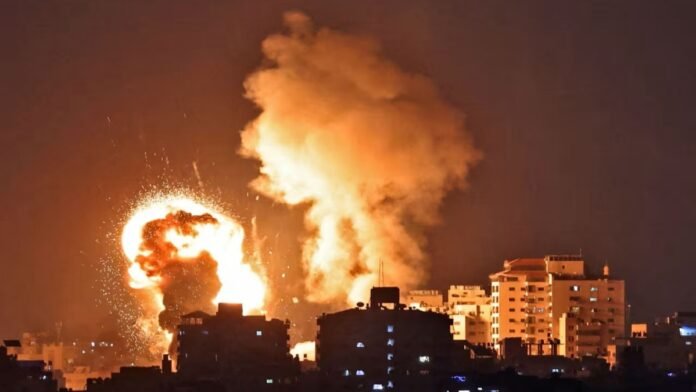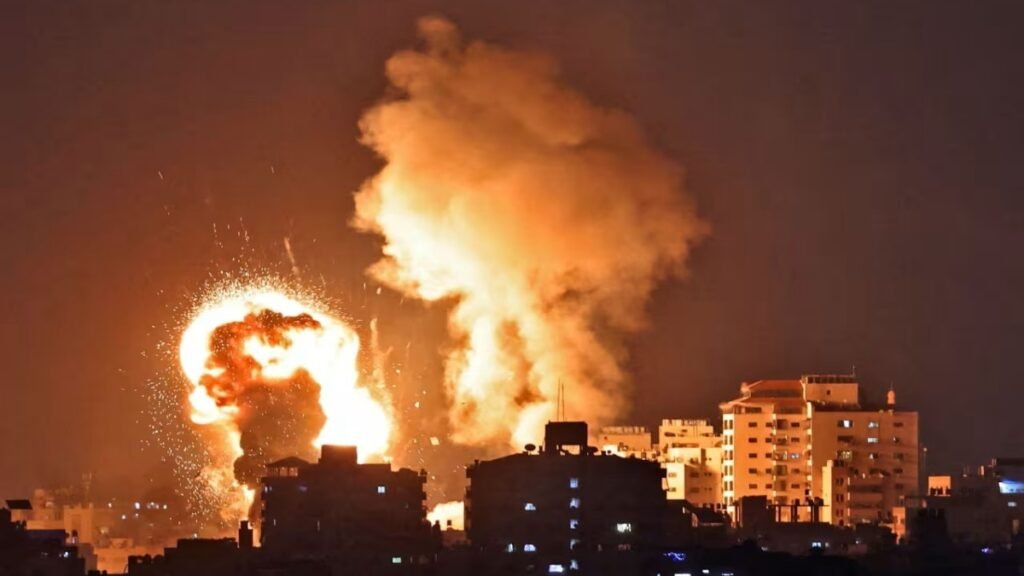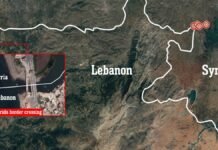
Key Points:
- Overnight Airstrikes: Israeli Defense Forces (IDF) conducted airstrikes targeting Hamas militants in southern Gaza to secure the humanitarian corridor.
- Objective: Prevent Hamas from hijacking humanitarian aid trucks, ensuring resources reach civilians.
- Hamas Misconduct: Reports reveal that up to 85% of aid deliveries were previously intercepted by Hamas and allied gangs.
- Economic Exploitation: Essential donated supplies, such as flour and rice, are sold at exorbitant rates in Gaza by Hamas-linked groups.
- Hostage Crisis: Over 1,200 deaths and 252 hostages resulted from Hamas attacks on October 7.
Tel Aviv: The Israel Defense Forces (IDF) announced on Thursday the successful execution of overnight airstrikes targeting Hamas militants in southern Gaza. These operations aimed to thwart attempts by the terrorist organization to intercept humanitarian aid deliveries and ensure safe access for Gaza’s civilian population.
The IDF stated, “Hamas terrorists attempted to capture the humanitarian corridor. The aim of the attack was to ensure safe delivery of aid to the citizens of Gaza. All the terrorists killed were Hamas members who planned to loot the trucks and use them for terrorist activities.”
The airstrikes, conducted with precision, targeted two locations where Hamas operatives had assembled to hijack aid trucks. According to military intelligence, these militants intended to redirect the resources for their own use and bolster ongoing terror activities.
The IDF clarified that no aid trucks were harmed during the operation and reassured that the humanitarian corridor remains open for deliveries.
Rising Accusations Against Hamas
Hamas has faced increasing allegations of diverting essential humanitarian supplies for profit. Since mid-November, reports indicate that the group, along with affiliated criminal gangs, has hijacked 85% of aid trucks entering Gaza. These groups reportedly operate under Hamas’s directive, redistributing the supplies for monetary and material gain.
Key findings include:
- Economic Exploitation: Sacks of donated flour and rice are sold at prices of $700 and $500, respectively, while cigarette packs fetch as much as $1,500.
- Financial Collaborations: Criminal gangs receive $10,000 monthly from Hamas to maintain checkpoints and facilitate aid theft.
- Extortion: Reports reveal that $800 was charged for donated tents intended for displaced civilians.
Hamas’s misappropriation has drawn international condemnation, with mounting calls for stronger measures to safeguard aid deliveries.
UN Opposition and Expert Insight
Professor Kobi Michael, a senior researcher at Tel Aviv University, emphasized the critical role of the Israeli military in aid distribution. However, he acknowledged the challenges posed by international opposition.
“The Israeli military is the only institution in the world that can deliver aid to Palestinians in Gaza. But to do so, Israel needs military control over the entire Gaza Strip, which the UN strongly opposes,” Michael stated.
The Ongoing Hostage Crisis
The humanitarian crisis is compounded by the devastating aftermath of Hamas’s October 7 attacks on Israeli communities near the Gaza border. The assault resulted in over 1,200 fatalities and the abduction of 252 individuals, including foreign nationals.

Hamas continues to hold 97 hostages, with over 30 feared dead. In addition, the organization has detained two Israeli civilians since 2014 and 2015 and retains the bodies of two soldiers killed during the same period.
The IDF’s latest airstrikes underline Israel’s resolve to combat Hamas’s exploitation of humanitarian aid while addressing the escalating humanitarian and security challenges in Gaza.




















































